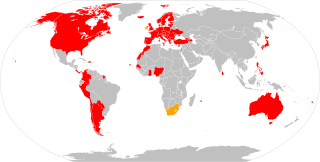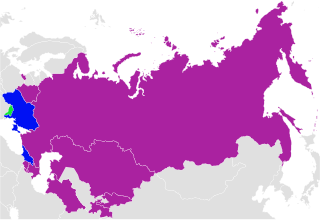
The European patent with unitary effect, also known as the unitary patent, is a European patent which benefits from unitary effect in the 17 participating member states of the European Union. Unitary effect may be requested by the proprietor within one month of grant of a European patent, replacing validation of the European patent in the individual countries concerned. Infringement and revocation proceedings are conducted before the Unified Patent Court (UPC), which decisions have a uniform effect for the unitary patent in the participating member states as a whole rather than in each country individually. The unitary patent may be only limited, transferred or revoked, or lapse, in respect of all the participating Member States. Licensing is however possible for part of the unitary territory. The unitary patent may coexist with nationally enforceable patents in the non-participating states. The unitary patent's stated aims are to make access to the patent system "easier, less costly and legally secure within the European Union" and "the creation of uniform patent protection throughout the Union".
The European Patent Organisation is a public international organisation created in 1977 by its contracting states to grant patents in Europe under the European Patent Convention (EPC) of 1973. The European Patent Organisation has its seat at Munich, Germany, and has administrative and financial autonomy. The organisation is independent from the European Union, and has as member states all 27 EU member states along with 12 other European states.

The European Patent Convention (EPC), also known as the Convention on the Grant of European Patents of 5 October 1973, is a multilateral treaty instituting the European Patent Organisation and providing an autonomous legal system according to which European patents are granted. The term European patent is used to refer to patents granted under the European Patent Convention. However, a European patent is not a unitary right, but a group of essentially independent nationally enforceable, nationally revocable patents, subject to central revocation or narrowing as a group pursuant to two types of unified, post-grant procedures: a time-limited opposition procedure, which can be initiated by any person except the patent proprietor, and limitation and revocation procedures, which can be initiated by the patent proprietor only.
The Paris Convention for the Protection of Industrial Property, signed in Paris, France, on 20 March 1883, was one of the first intellectual property treaties. It established a Union for the protection of industrial property. The convention is currently still in force. The substantive provisions of the Convention fall into three main categories: national treatment, priority right and common rules.
In patent law, industrial design law, and trademark law, a priority right or right of priority is a time-limited right, triggered by the first filing of an application for a patent, an industrial design or a trademark respectively. The priority right allows the claimant to file a subsequent application in another country for the same invention, design, or trademark effective as of the date of filing the first application. When filing the subsequent application, the applicant must claim the priority of the first application in order to make use of the right of priority. The right of priority belongs to the applicant or his successor in title.
The EPC 2000 or European Patent Convention 2000 is the version of the European Patent Convention (EPC) as revised by the Act Revising the Convention on the Grant of European Patents signed in Munich on November 29, 2000. On June 28, 2001, the Administrative Council of the European Patent Organisation adopted the final new text of the EPC 2000. The EPC 2000 entered into force on December 13, 2007.
There are two provisions in the regulations annexed to the Patent Cooperation Treaty (PCT) that relate to the search and examination of patent applications concerning computer programs. These two provisions are present in the PCT, which does not provide for the grant of patents but provides a unified procedure for filing, searching and examining patent applications, called international applications. The question of patentability is touched when conducting the search and the examination, which is an examination of whether the invention appears to be patentable.
The Patent Law Treaty (PLT) is a treaty signed on 1 June 2000 in Geneva, Switzerland, by 53 States and the European Patent Organisation. It entered into force on April 28, 2005. It aims at harmonizing and streamlining formal procedures such as the requirements to obtain a filing date for a patent application, the form and content of a patent application, and representation. The treaty "does not establish a uniform procedure for all parties to the PLT but leaves parties free to require fewer or more user-friendly requirements than those provided in the PLT." As of February 2023, the PLT had 43 contracting states.
The Substantive Patent Law Treaty (SPLT) is a proposed international patent law treaty aimed at harmonizing substantive points of patent law. In contrast with the Patent Law Treaty (PLT), signed in 2000 and now in force, which only relates to formalities, the SPLT aims at going far beyond formalities to harmonize substantive requirements such as novelty, inventive step and non-obviousness, industrial applicability and utility, as well as sufficient disclosure, unity of invention, or claim drafting and interpretation.
Patentable, statutory or patent-eligible subject matter is subject matter of an invention that is considered appropriate for patent protection in a given jurisdiction. The laws and practices of many countries stipulate that certain types of inventions should be denied patent protection. Together with criteria such as novelty, inventive step or nonobviousness, utility, and industrial applicability, which differ from country to country, the question of whether a particular subject matter is patentable is one of the substantive requirements for patentability.
European patent law covers a range of legislations including national patent laws, the Strasbourg Convention of 1963, the European Patent Convention of 1973, and a number of European Union directives and regulations. For some states in Eastern Europe, the Eurasian Patent Convention applies.
Intellectual property law in Romania has developed significantly in the period since the Romanian Revolution of 1989 because of the need to enforce various regional and international treaties and agreements, such as the Agreement on Trade-Related Aspects of Intellectual Property Rights (TRIPS), the European Directives on Biotechnological Inventions, on Trademarks and Geographical Indications, and on Supplementary protection certificates, the Trademark Law Treaty, the Patent Law Treaty, and the European Union regulation on the Community Trademark, and the need to harmonize domestic patent law with the European Patent Convention (EPC) and with the European Union.
The Strasbourg Agreement Concerning the International Patent Classification, also known as the IPC Agreement, is an international treaty that established a common classification for patents for invention, inventors' certificates, utility models and utility certificates, known as the "International Patent Classification" (IPC). The treaty was signed in Strasbourg, France, on March 24, 1971, it entered into force on October 7, 1975, and was amended on September 28, 1979. The Agreement and the certified statement were registered by the World Intellectual Property Organization on 28 February 1980.

The Convention on Cybercrime, also known as the Budapest Convention on Cybercrime or the Budapest Convention, is the first international treaty seeking to address Internet and computer crime (cybercrime) by harmonizing national laws, improving investigative techniques, and increasing cooperation among nations. It was drawn up by the Council of Europe in Strasbourg, France, with the active participation of the Council of Europe's observer states Canada, Japan, the Philippines, South Africa and the United States.

The Eurasian Patent Convention is an international patent law treaty instituting both the Eurasian Patent Organization (EAPO) and the legal system pursuant to which Eurasian patents are granted. It was signed on 9 September 1994 in Moscow, Russia, and entered into force on 12 August 1995.
European patents are granted by the European Patent Office (EPO) under the legal provisions of the European Patent Convention (EPC). However, European patents are enforced at a national level, i.e. on a per-country basis, or, since June 1, 2023, before the Unified Patent Court (UPC). Under Article 64(3) EPC, "any infringement of a European patent shall be dealt with by national law," with the European Patent Office having no legal competence to deal with and to decide on patent infringements in the Contracting States to the EPC. A few, limited aspects relating to the infringement of European patents are however prescribed in the EPC.

The Unified Patent Court (UPC) is a common patent court of 17 countries of the European Union, which opened on 1 June 2023.
The unitary patent for Switzerland and Liechtenstein is a patent having a unitary character over the territories of Switzerland and Liechtenstein. It can either be a national patent, or a European patent granted under the European Patent Convention (EPC) and having a unitary character pursuant to Article 142(1) EPC. The unitary patent "may only be granted, transferred, annulled or lapse in respect of the whole territory of protection," i.e. for both Switzerland and Liechtenstein.

The Treaties of the European Union are a set of international treaties between the European Union (EU) member states which sets out the EU's constitutional basis. They establish the various EU institutions together with their remit, procedures and objectives. The EU can only act within the competences granted to it through these treaties and amendment to the treaties requires the agreement and ratification of every single signatory.
Patent law in Aruba is mainly governed by the Patents Regulation, the law governing the Aruban patent. The Dutch government indicated in 2007, that the patent regulation was, to a large extent identical to the Rijksoctrooiwet.